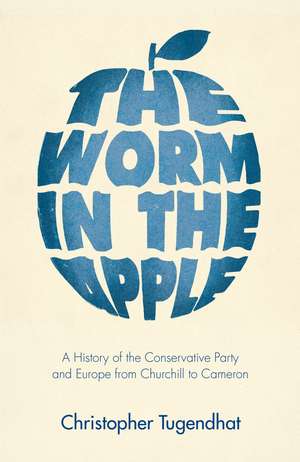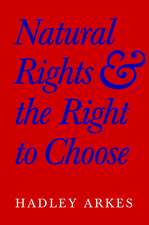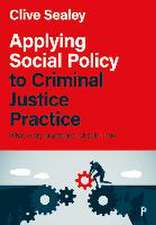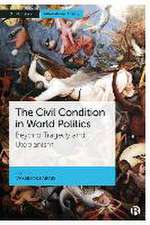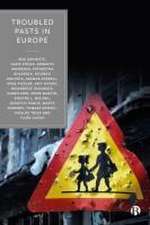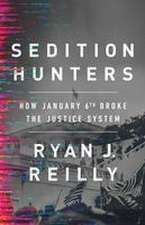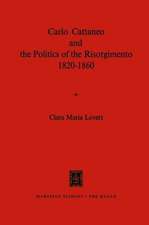The Worm in the Apple: A History of the Conservative Party and Europe from Churchill to Cameron
Autor Christopher Tugendhaten Limba Engleză Hardback – 30 noi 2022
The Conservative Party has been in power for 47 of the 65 years since the end of World War II. During that time the division within the party over Europe has been the enduring drama of British politics—from Churchill’s decision not to join the original European Coal and Steel Community in 1951 to Cameron’s decision to hold the Brexit referendum in 2016. Other leaders came and went, but the issue was always there—sometimes center-stage, at others behind the scenes—destabilizing foreign policy, corroding the body politic, and destroying several of the party’s leaders. These questions, and how they panned out, created a deep, grumbling discontent—the worm in the apple—that, over time, turned the Conservative Party and, by extension, a significant section of the electorate, against British membership of the EU. By telling the story of the arguments and divisions within the Conservative Party, The Worm in the Apple helps to explain why Britain voted to leave the European Union in 2016.
Preț: 107.81 lei
Preț vechi: 127.76 lei
-16% Nou
20.63€ • 21.59$ • 17.17£
Carte disponibilă
Livrare economică 10-24 martie
Livrare express 21-27 februarie pentru 50.50 lei
Specificații
ISBN-10: 191336853X
Pagini: 256
Dimensiuni: 152 x 229 x 30 mm
Greutate: 0.5 kg
Editura: HAUS PUBLISHING
Colecția Haus Publishing
Notă biografică
Christopher Tugendhat was a lead writer for the Financial Times before being elected as an MP for the Cities of London and Westminster. He served as a member of the European Commission for nine years and was later chairman of Chatham House and the Civil Aviation Authority before being appointed to the House of Lords by John Major.
Extras
The drama was sustained by a sequence of ifs. If Churchill, and Eden, had not turned their backs on the original enterprise in the 1950s; if Macmillan in 1961 and Heath in 1973 had not rejected advice to come clean with the people about the sovereignty implications of membership; if President Valéry Giscard d’Estaing of France and Chancellor Helmut Schmidt of West Germany had not tried to browbeat Margaret Thatcher when she became prime minister in 1979; if her fall in 1990 had not left a legacy of bitterness about Europe; if she had not undermined her successor, John Major, after he had negotiated the Maastricht Treaty in 1992; if, after 1997, the Conservative Party had not paved the way for UKIP and fallen in thrall to its agenda; if immigration into Britain from other European Union (EU) countries had not increased so much after the enlargement of the EU in 2004; if, if, if…
These possibilities and how they panned out created a deep, grumbling discontent – the worm in the apple – that, over time, turned the Conservative Party and, by extension, a significant section of the electorate against British membership of the EU. While the outward form of the membership remained unchanged, the worm ate away at its legitimacy. To understand why Britain voted to leave in 2016, it is necessary to understand the arguments and divisions within the Conservative Party that began under Churchill and reached their apotheosis under Cameron. They are by no means the whole story, but they are an important part of it.
In 1972, as a Conservative MP, I voted in favour of the highly contentious European Communities Act, which enabled Britain to join the European Economic Community (EEC) on 1 January 1973. In the 1975 referendum, I campaigned with other members of my party for Britain to remain a member. When Thatcher was prime minister, I was a European commissioner in Brussels. When I returned to Britain in 1985, I wrote a book about the future of Europe. Since the early 1990s, I have been a member of the House of Lords, participating in debates on European issues. In the 2016 referendum, I voted to remain.
Now, fifty years after the epic Parliamentary battles generated by the 1972 act, I explain how the worm entered the apple; why it flourished; how the apple might have been saved; and the factors, going back over many decades, that contributed to the result of the 2016 referendum and so to British withdrawal.
Cuprins
1. Missed Opportunities 1946–1959 3
2. Macmillan’s False Start 1959–1963 27
3. H eath’s Triumph and Tragedy 1963–1975 49
4. T he 1975 Referendum – Before and After 75
5. T hatcher’s Battles 1979–1991 93
6. T hings Fall Apart 1991–1997 119
7. T hree Leaders 1997–2005 145
8. Cameron’s Dilemmas 2005–2016 169
Conclusions 199
Notes 215
Acknowledgements 233
Index 235
Recenzii
Descriere
The first extensive history of the relationship between the UK Conservative Party and the European Union.
The Conservative Party has been in power for 47 of the 65 years since the end of World War II. During that time the division within the party over Europe has been the enduring drama of British politics—from Churchill’s decision not to join the original European Coal and Steel Community in 1951 to Cameron’s decision to hold the Brexit referendum in 2016. Other leaders came and went, but the issue was always there—sometimes center-stage, at others behind the scenes—destabilizing foreign policy, corroding the body politic, and destroying several of the party’s leaders. These questions, and how they panned out, created a deep, grumbling discontent—the worm in the apple—that, over time, turned the Conservative Party and, by extension, a significant section of the electorate, against British membership of the EU. By telling the story of the arguments and divisions within the Conservative Party, The Worm in the Apple helps to explain why Britain voted to leave the European Union in 2016.
